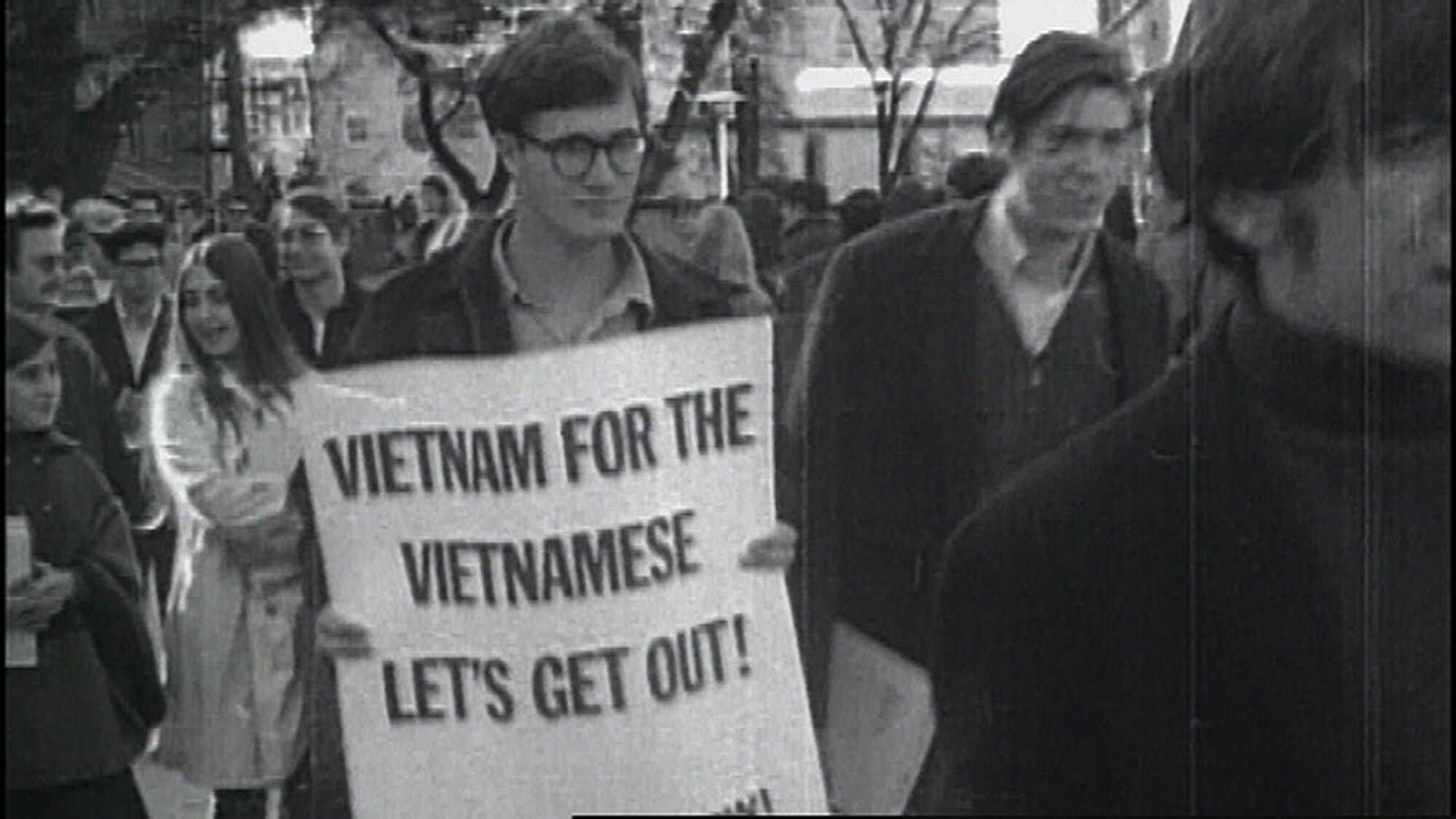
American Experience
American Experience
They marched by the thousands, on campuses from coast to coast. At different times they chose different targets: the Pentagon, Presidents Nixon and Johnson, the draft, Dow Chemical. But the students all acted from a common belief that the Vietnam War was wrong. As that conflict escalated, the protests grew in strength, and some turned violent. They also triggered a backlash.

Getting Started In many ways the student protests at the University of Wisconsin mirrored those taking place on campuses across the country. The first substantial demonstration, in October 1963, occurred when there were only American military advisers in Vietnam, and it opposed the government's support for Ngo Dinh Diem, the repressive president of South Vietnam. Some early antiwar events were organized by faculty, such as the teach-in on April 1, 1965, that future Chancellor William Sewell put together. It was the second such teach-in in the nation and came only a few weeks after the first American combat troops arrived in Vietnam. Some teach-ins involved only lectures and discussion; some combined theory with practical steps, such as the 15,000 who marched from the University of California at Berkeley towards the Oakland Army Terminal in October 1965.
Protesting the Draft Demonstrations grew in 1966, spurred by a change in the Selective Service System's draft policy that exposed students in the bottom of half of their classes to the possibility that their deferments would be revoked and they would be drafted. Teach-ins changed to sit-ins — student take-overs of administration offices. A three-day event at the University of Chicago got national attention in May 1966, and University of Wisconsin students also staged their own occupation of an administration building that month. The Madison draft protest, which drew several thousand students to one rally, was peacefully resolved by a promise that the faculty would review the school's draft policy. But tensions rose at campuses like Cornell, where students tried to organize a national burn-your-draft-card movement; and Harvard, where protesters trapped Secretary of Defense Robert McNamara in a police car and assailed him with questions about the war.
Anti-Dow Sentiment As 1967 began, many antiwar students continued traditional forms of dissent, writing letters to the editor and taking out advertisements in campus publications. But even as antiwar student body presidents were meeting with Secretary of State Dean Rusk, other students were planning sit-ins tied to napalm-maker Dow Chemicals attempts to recruit on campus. The first anti-Dow protests took place in October 1966, with more than a hundred occurring at colleges nationwide within a year. University of Wisconsin students staged their first Dow-related sit-in in February 1967, and when Dow returned that October, the protests and police response marked the first time that a campus antiwar demonstration had turned violent.

Violence on Campuses It would not be the last time violence broke out. Rough confrontations became much more common in the years that followed, culminating most horribly in the May 1970 shooting of 13 Kent State University students by National Guardsmen. Four of those Kent State students died. That event, combined with Nixon's invasion of Cambodia, led to protests at more than 1,300 college campuses, with some 500 closed by student and faculty strikes. ROTC facilities were attacked, and police and National Guard troops were dispatched to more than a hundred colleges. In August of that year, the antiwar protests at the University of Wisconsin took an ominous turn; a bomb destroyed the building holding the Army Math Research Center, killing one young scientist.
The Backlash Since the first wave of teach-ins hit campuses, the American government had been working to get its side of the story out at universities. For example, it supported the American Friends of Vietnam, a pro-administration group that held a rally in June 1965 at Michigan State University. The group could never match the intensity or numbers of antiwar demonstrations. But the violent consequences of some of those protests helped trigger a backlash of support for the government and targeted corporations like Dow. A record number of University of Wisconsin students signed up for Dow interviews in the wake of the October 1967 bloodshed. Wisconsin legislation held hearings denouncing student protests. And local newspaper editorials overwhelmingly supported Dow and criticized the students. The pro-war group Young Americans for Freedom saw increased enrollment in its University of Wisconsin chapter. A right-wing student newspaper was founded, the Badger Herald. And polls after the Dow protests showed that large majorities felt the demonstrations were "acts of disloyalty" against the soldiers in Vietnam that hurt the larger antiwar cause.
Link nội dung: https://topnow.edu.vn/the-protesters-were-angry-a93514